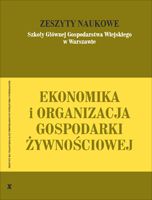Main Article Content
Article Details
Borkowski B., Dudek H., Szczesny W.(2003): Ekonometria. Wybrane zagadnienia. Wydawnictwo Naukowe PWN, Warszawa.
Brown R.G. (1959). Statistical Forecasting for Inventory Control, McGraw-Hill, New York Analysis Modelling Simulation, 42, 1361-76.
Antonelli, C. (1999). The Microdynamics of Technological Change (London, Routledge).
DeBresson, C. (1996). Economic Interdependence and Innovative Activity: An InputOutput Analysis (Cheltenham, Edward Elgar).
Eding, G. J., Oosterhaven, J., Stelder, D. (2001). Clusters, Linkages and Regional Spillovers: Methodology and Policy Implications for the two Dutch Mainports and the Rural North, Regional Studies, 35 (9), 809-22. (Crossref)
Gurgul, H., Majdosz, P. (2005). Key Sector Analysis: A Case of the Transited Polish Economy, Managing Global Transitions, 3 (1), 95-111.
Hauknes, J. (1998). Norwegian Input-Output Clusters and Innovation Patterns, STEP Report Series, No. R-15
Hoen, A. (2002). Identifying Linkages with a Cluster-based Methodology, Economic Systems Research, 14 (2), 131-45. (Crossref)
Krugman, P. (1991). Geography and Trade (Cambridge MA, MIT Press).
Krugman, P., Venables, A.J. (1996). Integration, Specialization, Adjustment, European Economic Review, 40, 959-68. (Crossref)
Porter, M. E. (1998). On Competition (Boston, Harvard Business Review).
Downloads
- Lucyna Błażejczyk-Majka, Radosław Kala, Estymacja udziałów metodą regresji grzbietowej , Zeszyty Naukowe SGGW - Ekonomika i Organizacja Gospodarki Żywnościowej: Nr 60 (2006)
Możesz również Rozpocznij zaawansowane wyszukiwanie podobieństw dla tego artykułu.





